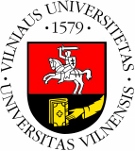Studies and researches
Vol. 17 Issue 1 - 6/2025
Foresight and Active Forecast Potential for Improving Defense Capability
This paper examines the significance of foresight and active forecasting as integrative frameworks for strengthening defense capability. Using Ukraine as an illustrative example, the study demonstrates how these approaches provide a nuanced understanding of current security challenges and enable the anticipation of future scenarios – both essential for effective strategic planning and state-level decision-making.
The influence of foresight on the formation of self-defeating prophecies in the context of active forecasting and its role as a management tool capable of public policy adjustment are considered. Examples of NATO Strategic Command and DARPA leadership experience of improving the effectiveness of defense plans using this methodology are considered.
The authors discuss various approaches to the use of foresight in the field of defense, including open and confidential options, as well as their possible outcomes in a confrontational international environment. Particular attention is paid to the need to take into account the disinformation factor. The study confirms that foresight as an active forecast is a powerful tool that can significantly improve the state's defense capability and provide a strategic advantage in a rapidly changing international security situation. Read more
The influence of foresight on the formation of self-defeating prophecies in the context of active forecasting and its role as a management tool capable of public policy adjustment are considered. Examples of NATO Strategic Command and DARPA leadership experience of improving the effectiveness of defense plans using this methodology are considered.
The authors discuss various approaches to the use of foresight in the field of defense, including open and confidential options, as well as their possible outcomes in a confrontational international environment. Particular attention is paid to the need to take into account the disinformation factor. The study confirms that foresight as an active forecast is a powerful tool that can significantly improve the state's defense capability and provide a strategic advantage in a rapidly changing international security situation. Read more
Keywords:
defense capability, decision-making, military technology, international security, risk management
JEL:
O52, Q50, P00, L00
defense capability, decision-making, military technology, international security, risk management
JEL:
O52, Q50, P00, L00














